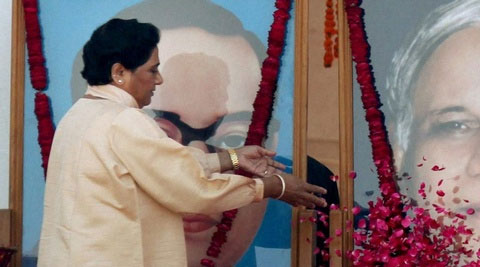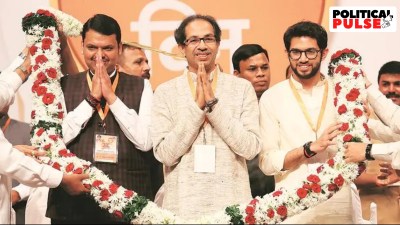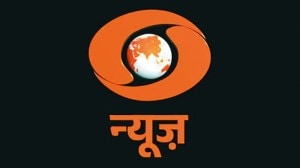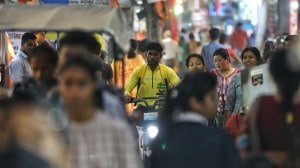- India
- International
Return of the chamcha age
Kanshi Ram’s critique of Dalit politics of 1970s has again become relevant
 Kanshi Ram wrote Chamcha Age (Era of the Stooges) based on what he witnessed in Maharashtra, where he was living.
Kanshi Ram wrote Chamcha Age (Era of the Stooges) based on what he witnessed in Maharashtra, where he was living.
In the recent assembly elections in Maharashtra and Haryana, Dalit political parties performed poorly. The BSP won just one seat in Haryana and none in Maharashtra, while no Republican Party of India (RPI) faction could win a seat in Maharashtra. In the last Lok Sabha elections, too, the BSP did not win a single seat, though it fielded candidates from a large number of constituencies in Uttar Pradesh and other states. The RPI factions also could not win a single seat in Maharashtra.
Dalit politics has never been able to consolidate its energies in one party, nor is there any one form of Dalit politics in the country. It is struggling to maintain its identity in different states in different forms, and under different names. The agenda of empowering Dalits, liberating them from exploitation and oppression and ensuring for them a good life seems to exist, but if we ignore the BSP in UP, most other Dalit parties have been subsumed by mainstream political parties or become their adjuncts, negotiating for a small share of the political power pie.
This situation is most visible in Maharashtra, home state of Babasaheb Ambedkar, messiah of the Dalits. When Ambedkar started developing Dalit politics in India, it was his belief that a day would come when Dalit political parties emerged powerful in electoral politics and marginalised Brahminical forces. He formed the RPI in 1957 to ensure a better future for Dalits. By 1970, however, it had become so marginalised in Maharashtra that it had to bargain with the Congress for a mere two seats.
Kanshi Ram wrote Chamcha Age (Era of the Stooges) based on what he witnessed in Maharashtra, where he was living. In his thesis, he advised Dalit politics to shun the tendency to merge with major political parties for a few seats and, instead, strengthen themselves politically. He said that Dalits and bahujans should grow out of their “begging” tendency and become givers rather than takers. He showed the way by developing a powerful Dalit-bahujan movement in UP and other parts of northern India and then forming the BSP in 1984.
He initiated such a politics keeping in mind that the bahujans, comprising nearly 85 per cent of UP’s population and including the SCs, STs and OBCs, formed the largest social group in the country and could become influential electorally and shape the politics of power. For some years, it seemed his dream was coming true and Mayawati, his protégé and leader of the BSP, became chief minister of UP four times. In 2007, her party swept the UP assembly polls through her strategy of social engineering, or sarvjan (all castes) politics, taking everyone by surprise. However, the BSP has been pushed to the fringes again, as her sarvjan politics failed to resist the rise of Hindutva.

Elsewhere in India, the Dalit vote is divided among the larger political parties. In Haryana, for instance, Tek Chand Sharma was the only BSP candidate to win an assembly seat. In Punjab, the two big Dalit social groups, namely the Ravidasi Jatavs and the Valmikis, are now part of the social bases of the Congress and the Akali Dal, respectively. Since Kanshi Ram failed to bridge the division between the Ravidasi Jatav and the Valmiki communities, a strong Dalit party could not emerge in Punjab. Similarly, an electorally effective Dalit politics could not develop in the southern states, including Karnataka, Tamil Nadu, Kerala and Andhra Pradesh — Dalit political parties either did not emerge or were appropriated by the Congress and the regional parties when they did.
The future of Dalit politics in India is thus bleak. The selfishness and opportunism of a section of the political leadership, the inner division and conflict among influential Dalit castes, the appropriation of Dalit communities by major political parties, the conduct of Dalit groups in begging the bigger parties for seats, the tendency to be takers rather than givers and the emphasis on sarvjan politics over bahujan politics are some of the reasons for this state of affairs. Besides these, the absence of critics within Dalit parties who could point out mistakes has been the main reason why politics of the kind Kanshi Ram developed in the 1980s and 1990s could not be sustained.
Dalit politics has returned to the “chamcha age”, the only difference being that Dalit leaders are pleading before the BJP, the Shiv Sena and regional parties instead of the Congress. Kanshi Ram’s critique of the Dalit politics of Maharashtra in the 1970s has become relevant again. It is important that Dalit politics regains the spirit that Kanshi Ram advocated. For that, it needs to develop a new language that can link identity politics with larger social, political and economic issues. Dalit politics is desperately waiting for intellectuals and the educated in the community to respond to the situation.
The writer, professor, G.B. Pant Social Science Institute, University of Allahabad, is author of ‘Kanshiram: Leader of the Dalits’
express@expressindia.com
EXPRESS OPINION
More Explained
Apr 20: Latest News
- 01
- 02
- 03
- 04
- 05









































